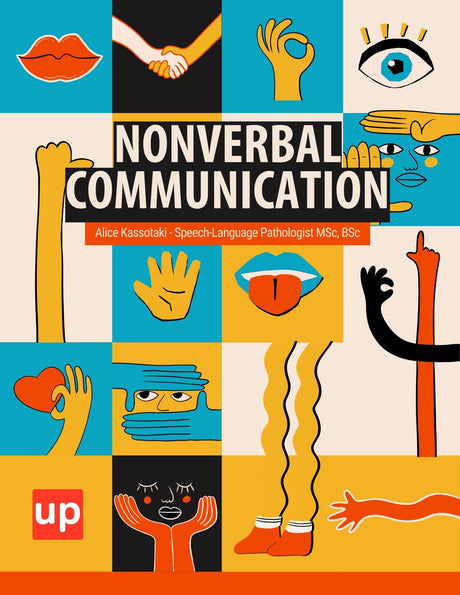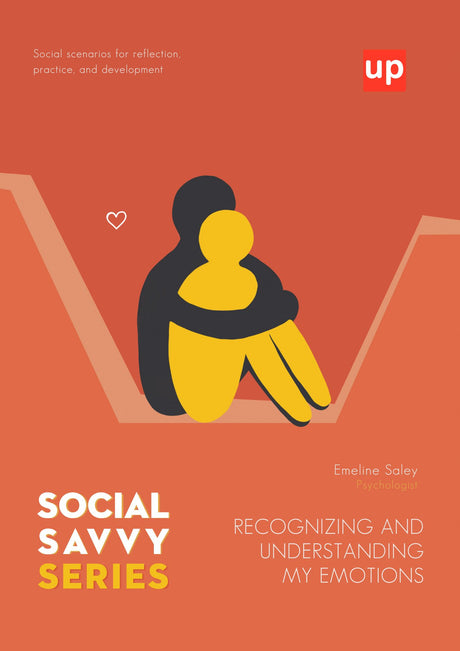Thriving in the Asperger's Syndrome Workplace: Practical Tips and Strategies
Navigating the workplace can be challenging for individuals with Asperger’s Syndrome, especially in the context of the Asperger’s syndrome workplace. This article explores how Asperger’s affects job performance and provides practical strategies for creating a supportive work environment. We will look into recognizing the condition, leveraging strengths, adapting to sensory differences, improving communication, and fostering inclusivity.
Key Takeaways
- Understanding Asperger’s Syndrome and its unique challenges can create a supportive work environment for affected individuals.
- Leveraging the strengths of individuals with Asperger’s, like attention to detail and strong memory, can enhance job performance and satisfaction.
- Training and education for colleagues about Asperger’s can promote inclusivity, reduce stigma, and improve overall workplace culture.
Understanding Asperger's Syndrome

Asperger’s Syndrome is a developmental disorder that falls under the broader autism spectrum. It is characterized by difficulties in social interactions and repetitive behaviors. People with Asperger’s see, hear, and experience the world differently, which can impact their daily lives in various ways. Typically diagnosed in early childhood, between the ages of five and nine, boys are diagnosed with Asperger’s Syndrome three to four times more frequently than girls.
Understanding the spectrum nature of Asperger’s is essential, as it manifests differently in each individual. Treatments are tailored to individual needs and often include social skills training and behavioral support. This personalized approach helps those with Asperger’s better navigate their unique challenges.
Recognizing Asperger's in the Workplace

Recognizing Asperger’s Syndrome in the workplace can be the first step toward creating a supportive environment. Individuals on the autism spectrum often face difficulties understanding non-verbal cues and social nuances, which can sometimes lead to misconceptions about their behavior. For example, colleagues might mistakenly perceive someone with Asperger’s as rude or disorganized due to these communication challenges.
Misinterpretations of their behavior can contribute to a negative perception, emphasizing the need for workplaces to foster understanding and patience. Practical tools like aide-memoires, including reminders and lists, can significantly reduce anxiety by providing structure and predictability in their job tasks. These tools help individuals with Asperger’s manage their responsibilities more effectively.
Recognizing the challenges faced by employees with Asperger’s, such as dealing with unknown situations and forming overarching concepts, is key to supporting them. Providing adequate support can enhance job performance and employee satisfaction.
Leveraging Strengths
Individuals with Asperger’s Syndrome often possess remarkable strengths that can be incredibly valuable in the workplace. Their precision, attention to detail, and strong memory make them excel in technical fields such as computer programming and library science. These aspects are highly sought after in many businesses, where accuracy and thoroughness are paramount.
Structured roles with clearly defined objectives help individuals with Asperger’s thrive by providing a clear framework within which they can operate. Jobs that leverage their superior long-term memory and visual thinking skills, like drafting, are also well-suited for them. Focusing on these strengths allows businesses to create roles that engage and motivate employees with Asperger’s to perform at their best.
Moreover, practical jobs that minimize the need for quick memory recall are often more suitable for individuals with high-functioning autism. These roles allow them to focus on their tasks without the pressure of rapid decision-making, thereby enhancing their overall job satisfaction and productivity.
Sensory Processing Differences

Sensory processing differences are a significant aspect of Asperger’s Syndrome. Individuals may display hypersensitivity or hyposensitivity to sensory inputs, which can affect their interactions with the environment. For instance, hypersensitivity can make bustling workplaces overwhelming, while hyposensitivity might hinder their response to sensory information.
A sensory-friendly work environment can significantly improve comfort and productivity for employees with Asperger’s. Small modifications, such as reducing lighting or minimizing noise, can make a big difference.
A personal sensory profile can help identify specific needs and tailor the workspace accordingly, incorporating positive sensory experiences like calming visuals or sounds to enhance the overall atmosphere.
Effective Communication Strategies
Effective communication is vital in supporting employees with Asperger’s Syndrome. Clear, direct language helps them understand tasks better and minimizes confusion. Avoiding sarcasm or figurative language is also important, as these can be easily misinterpreted.
Addressing the person by name at the beginning of a conversation can maintain attention effectively. Breaking down information into smaller, manageable chunks can prevent cognitive overload, making it easier for individuals with Asperger’s to process and retain information. Additionally, visual aids such as symbols or timetables can enhance understanding and provide a clear structure for their tasks, including the importance of eye contact.
Social Interaction Challenges
Social interaction can be particularly challenging for individuals with Asperger’s Syndrome. Despite having average or above-average intelligence and excelling academically, they often struggle with social nuances. Their rigid adherence to social rules can create a sense of social naiveté, making interactions awkward.
Understanding and responding to social cues is another common difficulty. This can lead to perceptions of insensitivity or a lack of empathy, even though individuals with Asperger’s may possess varying degrees of compassion. Their unfiltered honesty, while refreshing, can sometimes be uncomfortable due to a lack of awareness of social norms.
To ease these challenges, utilizing technology for communication can be beneficial. For example, using text or email instead of face-to-face conversations can reduce the stress associated with social interactions. Despite their desire for social interaction, forming friendships can be difficult due to a lack of understanding of mutual social communication needs.
Flexibility and Adaptability
Flexibility in thought is often challenging for individuals with Asperger’s Syndrome, leading to anxiety when faced with unexpected changes or new situations. This inflexibility can make adapting to sudden changes especially difficult.
Support involves keeping demands on short-term working memory low in job tasks and providing a predictable routine. Flexibility of thought, or the ability to cope with the unexpected, is a crucial skill that can matter developed with time and support.
Supporting Mental Health and Wellbeing
Supporting mental health and wellbeing is crucial for employees with Asperger’s Syndrome. Sensory overload in the workplace can lead to increased stress, anxiety, and even physical pain. Preparing them for potential sensory stimuli they may encounter can alleviate some of this anxiety.
Predictable work environments help reduce stress and anxiety for autistic employees. Mindfulness practices are also beneficial, helping individuals cope with sensory overload and unexpected situations. Resources like the book ‘Living Independently on the Autism Spectrum’ offer valuable strategies for managing daily life and relationships.
Healthcare providers need to adapt their approaches to ensure comfort and understanding when treating autistic individuals. Group therapy may not be suitable for everyone, emphasizing the need for personalized mental health support.
Training and Education for Colleagues
Training and education for colleagues are crucial in promoting understanding and support in the workplace regarding Asperger’s Syndrome. Training in non-verbal communication can improve social integration and understanding of behaviors. Programs that educate colleagues on the unique communication styles of individuals with Asperger’s can foster a more inclusive environment.
Online courses are available to help both individuals with Asperger’s and their employers learn effective workplace strategies. Regular feedback and open communication are key to maintaining an inclusive culture.
Practical Support Strategies
Practical support strategies are vital for helping individuals with Asperger’s thrive in the workplace. Clear communication of job expectations and potential changes can help manage uncertainty. Providing structured tasks and responsibilities enhances job performance.
Providing tools like noise-canceling headphones and reducing visual distractions can significantly improve focus and productivity. Mentorship programs foster a sense of community and support, enhancing the workplace experience for autistic employees.
Books such as ‘101 Positive Steps Toward Employment with Autism’ and ‘Asperger Syndrome and Employment’ provide valuable insights and strategies for workplace success.
Creating an Inclusive Workplace Culture

Creating an inclusive workplace culture is essential for supporting autistic employees. Employers can encourage a culture that values patience and understanding towards their unique challenges. Educating staff about neurodiversity fosters a more inclusive environment that values different perspectives.
Workplace training can reduce stigma by highlighting the strengths and contributions of autistic individuals. Companies embracing inclusivity are more likely to capture new markets and meet financial goals, as they can tap into a wider range of human talent.
Celebrating diversity within the workplace leads to increased motivation, job satisfaction, and overall business performance.
Resources for Further Learning
Utilizing resources for further learning is crucial for the personal and professional development of individuals with Asperger’s Syndrome. Organizations like the National Autistic Society offer a variety of resources to support adults with Asperger’s in workplace integration. Their mental health hub provides tailored information for managing conditions like anxiety and OCD.
Seeking additional information and support can enhance one’s ability to thrive in the workplace. Continuous learning and using available resources for research are key to personal and professional growth.
Books and Educational Resources from Upbility
Upbility is a valuable resource for individuals seeking to enhance their understanding of Asperger's Syndrome and autism in the workplace. Their extensive collection of books and educational materials focuses on social communication, sensory processing, and strategies for fostering an inclusive environment. Upbility offers practical guides and resources that assist both employers and employees in navigating the complexities of the autism spectrum. By utilizing Upbility's resources, businesses can better support their employees with Asperger's, ultimately leading to improved job performance, satisfaction, and a more harmonious workplace culture.
Summary
In summary, understanding and supporting individuals with Asperger’s Syndrome in the workplace involves recognizing their unique challenges and leveraging their strengths. Effective communication, sensory-friendly environments, and inclusive workplace cultures are essential for their success.
By embracing these strategies, employers and colleagues can create a more harmonious and productive work environment where everyone can thrive. Inclusivity not only benefits autistic employees but also enhances overall team dynamics and business performance.
Frequently Asked Questions
What are the key characteristics of Asperger's Syndrome?
Asperger's Syndrome primarily features challenges in social interactions, repetitive behaviors, and distinct sensory processing quirks. Those with it usually have average to above-average intelligence and may shine in particular areas.
How can I recognize Asperger's Syndrome in the workplace?
You can recognize Asperger's Syndrome in the workplace by noticing challenges with non-verbal communication and social interactions. It's important to approach these observations with patience and understanding, as misinterpretations can often occur.
What strengths do individuals with Asperger's bring to the workplace?
Individuals with Asperger's bring exceptional attention to detail, strong memory, and precision to the workplace, making them highly effective in technical roles. These strengths can really enhance team performance and problem-solving capabilities.
How can I support an employee with Asperger's Syndrome?
To truly support an employee with Asperger's Syndrome, focus on clear communication of expectations and provide structured tasks. Creating a sensory-friendly workspace and offering regular feedback can also make a big difference.
Why is creating an inclusive workplace culture important?
Creating an inclusive workplace culture is crucial because it values diversity, boosts innovation, and fosters better collaboration among team members. This not only enhances productivity but also strengthens overall business performance.
References
- Attwood, T. (2015). The Complete Guide to Asperger's Syndrome. Jessica Kingsley Publishers. This comprehensive guide explores the nuances of Asperger's Syndrome, offering insights into social communication and workplace adaptations.
- Baron-Cohen, S., & Wheelwright, S. (2004). The Empathizing-Systemizing Theory of Autism: Implications for Education. Tizard Learning Disability Review, 9(4), 44-48. This article examines how understanding the cognitive differences in autism can inform educational and workplace strategies.
- Grandin, T. (2010). The Way I See It: A Personal Look at Autism & Asperger's. Future Horizons. Grandin shares personal experiences and practical advice for individuals with Asperger's in various environments, including the workplace.
- Howlin, P., & Moss, P. (2012). Adults with Autism Spectrum Disorders. Canadian Journal of Psychiatry, 57(5), 275-283. This study provides an overview of the challenges and strengths of adults with autism spectrum disorders in employment settings.
Original content from the Upbility writing team. Reproduction of this article, in whole or in part, without credit to the publisher is prohibited.









